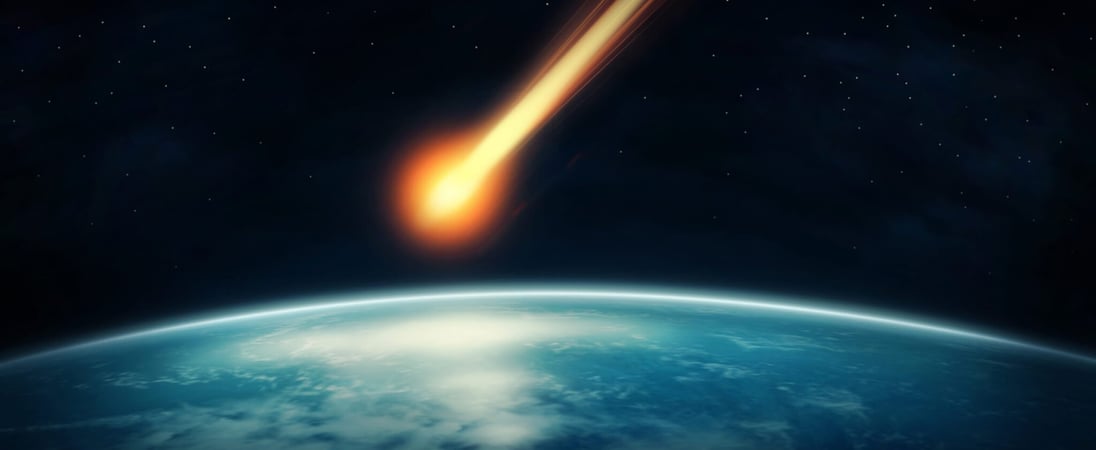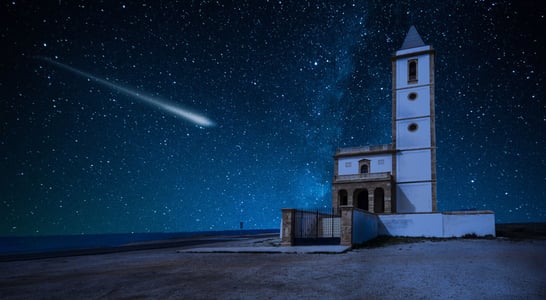
National Meteor Watch Day
Host a meteor-watching party with friends or family, or simply lie outside at night and see if you can spot a falling meteor. Grab a telescope to get a better look.
A meteor or “shooting star” is the visible streak of light from a heated and glowing meteoroid falling through the Earth’s atmosphere. And this is the day to look out for them, because it’s time for National Meteor Watch Day!
How to Celebrate National Meteor Watch Day
Look for Meteors
There is no better way to celebrate National Meteor Watch Day than to get outside and look to the heavens in the hope of seeing the glow of a falling star! Why not host a meteor-watching party with all of your friends and family? This is a great way to get everyone that you love together and enjoy something different from the norm.
Enjoy Some Company
Whether or not you get to witness an entire meteor shower or simply a few stray falling stars, you are bound to have a fun time together. This is also a good idea if you are looking for something romantic to do with the one you love or the one you are trying to impress!
Have Fun with Research
You can also celebrate National Meteor Watch Day by reading up on some of the biggest and most interesting meteor hits. There is only one place to begin when it comes to meteors, and this is with Allan Hills 84001. This lump of rock did not make a massive impact because of how big it was.
In fact, it did not weigh a lot at all; it was only around 176 grams. However, the reason it caused such a stir is because NASA scientists believed that it featured signs of alien life. This was no small conspiracy theory. In fact, the United States President Bill Clinton even gave a press conference about it on the day that it was discovered.
The researchers who assessed and evaluated the rock spotted what they believed to be deposits that contained iron, organic molecules, and tiny cells, which appeared similar to some of the bacteria that is produced on Earth.
Unfortunately, these claims have since been explained by natural mechanisms, and so the belief that it was alien life has since died down. However, it was certainly a massive deal at the time, and so it is interesting to read all about it.
Learn About the Largest Meteors
You can also spend some time reading about the biggest meteors that have made an impact. We will start you off with one of them, and this Morokweng, which is an ancient and massive crater that is located on the edge of the Kalahari Desert in South Africa.
It has been weathered away considerably. In fact, so much so that it was only discovered due to the circular magnetic anomalies within the rock, which were located in the 1990s by mineral prospectors. In 2006, this crater gained notoriety, though. This is because a 25-centimeter fragment of a meteorite was founded when researchers drilled about 700 meters down into the crater.
This was a massive shock. The crater was 70 km in width, and before this it was presumed that an impact that was large enough to create a hole like this would have melted the meteorite to the point where it could no longer be recognized.
Learn About National Meteor Watch Day
Legend has it that if you wished upon a shooting star the wish would come true. It is believed to have originated in Greece, when a Greek astronomer Ptolemy, around AD 127-151, wrote that the Gods occasionally, out of curiosity, peer down at the Earth from between the spheres.
When this happened stars sometimes slip through the gap, becoming visible as shooting stars. It was thought that because the Gods were already looking at us, they would be more receptive to any wishes we made!
Did you know that these shooting stars are actually very small? The size of the meteoroid can vary the size of a closed fist to the size of a pebble. Thousands of meteoroids enter the Earth’s atmosphere on a daily basis, but very few of them actually reach the surface; but when they do, they are called “meteorites.”
To celebrate National Meteor Watch Day, hope for clear skies and spend some time star-gazing. Or why not find out when the next meteor shower is going to take place. Remember if you see a shooting start make a wish, the Gods may answer it.
History of National Meteor Watch Day
National Meteor Watch Day was founded in 1961 by the International Astronomical Union to highlight the intrigue and beauty of meteors.
When space debris, for example, pieces of rock, enter the earth’s atmosphere, the surrounding air becomes scorching hot because of the friction. Therefore, what your eyes see a ‘shooting star’ that streaks through the sky, with flaming air surrounding it. This is what is known as a meteor. Most of the meteoroids that result in meteors are merely the size of a pebble.
Meteors tend to be viewed during the night. They are at their most visible when they are between 34 and 70 miles above the Earth. Once they reach between 31 and 51 miles above the Earth, they usually disintegrate. Their glow time tends to last for around one second.
Although it may seem that we are able to see a big number of meteors, we actually only see a very small percentage of them. This is because only a very small number of meteoroids will hit the atmosphere of the Earth and then skip back into space.
Different hues in the light can be caused because of the speed and the chemical composition of the meteoroid. This means that you can see some exciting color combinations. This includes…
- Red (silicate)
- Purple (potassium)
- Green or blue (copper)
- Yellow (iron)
- Yellow or orange (sodium)
The Perseids is one of the most active showers in the Northern Hemisphere. It has been named after Perseus, which is a constellation whereby most of the activity occurs. The comet 109P/Swift-Tuttle releases particles that result in meteors showering down on the earth.
The display that is put on is truly magical and dazzling. The Perseids are active during the summer months, typically from around the middle of July until the end of August.
On some evenings, when there is a new moon and a clear sky, those watching the sky are able to see more than one meteor per every minute. Pretty impressive, right?
National Meteor Watch Day FAQs
How did ancient cultures interpret meteor showers?
Many ancient societies viewed meteor showers as significant omens. For instance, the Romans believed meteors were the tears of the gods, signaling divine observation. In China, meteors were seen as dragons descending to Earth.
What is the origin of the term ‘meteor’?
The word ‘meteor’ comes from the Greek ‘meteoros,’ meaning ‘raised from the ground.’
Initially, it described any atmospheric phenomenon, including rain and clouds. This broad definition led to the term ‘meteorology’ for the study of weather.
Are there any superstitions associated with meteor showers?
Yes, various cultures have superstitions about meteors. Some Native American tribes viewed them as spirits of fallen warriors. In medieval Europe, meteors were sometimes considered omens of impending disaster.
What was the significance of the 1833 Leonid meteor shower?
The 1833 Leonid meteor shower was so spectacular that it led to the term ‘meteor watch.’ This event inspired organized observations and increased interest in meteors.
How do different cultures celebrate meteor showers today?
In Japan, people gather during the Perseid meteor shower to celebrate ‘Tanabata,’ a festival that honors the meeting of deities represented by stars.
In the U.S., events like National Meteor Watch Day encourage stargazing and education.
What is the largest meteorite ever found on Earth?
The Hoba meteorite in Namibia is the largest known, weighing about 60 tons. Discovered in 1920, it’s composed mainly of iron and nickel and remains in its original location.
Do meteor showers have any impact on Earth’s environment?
While most meteors burn up upon entering Earth’s atmosphere, larger ones can reach the surface as meteorites. However, typical meteor showers don’t significantly impact Earth’s environment.
What are ‘fireballs’ in the context of meteor showers?
Fireballs are exceptionally bright meteors that can light up the sky more brilliantly than Venus. They result from larger meteoroids entering the atmosphere and can sometimes be accompanied by sounds.
Is it true that meteor showers can be predicted?
Yes, meteor showers occur annually when Earth passes through debris left by comets. Astronomers can predict their occurrence, peak times, and intensity based on historical data.
What is the significance of June 30th in meteor history?
On June 30, 1908, the Tunguska event occurred in Siberia, where a large explosion, believed to be caused by a meteoroid or comet fragment, flattened an estimated 80 million trees over 2,150 square kilometers.
See what else is happening…
There’s always more going on every month at Days Of The Year. Here are our favorites this month!
Also on ...
View all holidaysSocial Media Day
Post, retweet, reblog, comment and hashtag…get involved online on Social Media Day, or try out a new platform to connect to others, find new content, and more.
International Asteroid Day
Explore the mysteries of space rocks hurtling through the galaxy, with the potential to unlock secrets of our universe!
National Outfit-of-the-Day Day
Showcasing personal style with a daily ensemble — an expressive way to share fashion inspiration and creativity online.




